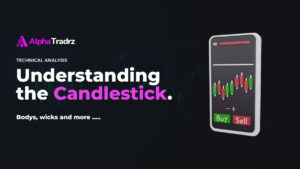Trading Tools.
Trading tools are software and platforms used by traders to make informed decisions and execute trades. They include charting and technical analysis tools, trade execution tools, portfolio management tools, news and market data providers, risk management tools, and trading calculators. These tools help traders analyze market data, monitor their investments, manage risk, and execute trades in an automated and efficient manner.
Charting and Technical Analysis Tools
Trade Execution Tools
No posts found!
Portfolio Managment Tools
No posts found!
News and Market Data Providers
No posts found!
Risk Managment Tools
No posts found!
Trading Calculators
No posts found!
Personal Finance Calculators
Calculators include The Millionaire Calculator, Simple Retirement Calculator, Retirement Investment Calculator, Compound Interest Calculator, Simple Mortgage Calculator,
No posts found!
Explainers
Charting and Technical Analysis Tools
Charting and technical analysis tools are used by traders and investors to analyze the price and volume data of financial instruments and make informed investment decisions.
Some of the common charting and technical analysis tools include:
Candlestick charts: A type of financial chart that displays the high, low, open, and close prices of a financial instrument in a specific time frame.
Line charts: A type of chart that plots a financial instrument’s price over time, represented as a continuous line connecting the data points.
Bar charts: A type of chart that displays the high, low, open, and close prices of a financial instrument in a specific time frame, represented as a vertical bar.
Moving Averages: A technical indicator that plots the average price of a financial instrument over a specific number of periods, used to identify trends and support and resistance levels.
Bollinger Bands: A technical indicator that plots two standard deviation lines above and below a moving average, used to measure market volatility and identify potential trading opportunities.
Relative Strength Index (RSI): A technical indicator that measures the strength of a financial instrument’s price action, used to identify potential overbought or oversold conditions.
MACD (Moving Average Convergence Divergence): A technical indicator that measures the difference between two exponential moving averages, used to identify trend changes and potential trading opportunities.
These tools are used in combination with other forms of analysis, such as fundamental analysis and market sentiment, to make informed investment decisions. Traders and investors may also use different charting and technical analysis tools for different financial instruments and time frames, depending on their investment goals and risk tolerance.
In conclusion, charting and technical analysis tools are an important part of the investment process, providing traders and investors with a visual representation of price and volume data that can be used to analyze market trends and identify potential trading opportunities.
Trading Calculators
Trading calculators are tools that traders use to help them make informed investment decisions. These calculators can perform a variety of calculations such as determining the value of a trade, calculating the margin requirements for a trade, and estimating the potential profit or loss from a trade. Some common types of trading calculators include:
Position size calculator: This calculator helps traders determine the appropriate position size for a trade based on their account size, risk tolerance, and the stop-loss level for the trade. This is an important tool for risk management.
Profit and loss calculator: This calculator helps traders estimate the potential profit or loss from a trade based on the entry price, exit price, and the number of shares or contracts traded. This can help traders determine their risk-reward ratio and make more informed investment decisions.
Pip calculator: This calculator helps traders determine the value of a pip, which is the smallest unit of price movement for a currency pair. This can help traders determine the potential profit or loss from a trade based on the number of pips moved.
Margin calculator: This calculator helps traders determine the margin requirements for a trade, which is the amount of money that needs to be set aside as collateral to enter a trade. This can help traders determine the leverage they can use for a trade and manage their risk more effectively.
Fibonacci calculator: This calculator helps traders determine key levels of support and resistance using the Fibonacci ratio. This can help traders determine where to set their stop-loss levels and take profit levels for a trade.
Option calculator: This calculator helps traders determine the value of an option contract, which gives the holder the right, but not the obligation, to buy or sell an underlying asset at a specific price at a specific date.
Implied Volatility calculator: This calculator helps traders determine the volatility of the underlying stock, index or commodity using options prices.
In summary, trading calculators are tools that traders use to help them make informed investment decisions. These calculators can perform a variety of calculations such as determining the value of a trade, calculating the margin requirements for a trade, and estimating the potential profit or loss from a trade. Examples of trading calculators include Position size calculator, Profit and loss calculator, Pip calculator, Margin calculator, Fibonacci calculator, Option calculator and Implied Volatility calculator. These calculators can be a great tool for traders to use, but it’s important to keep in mind that they are only one aspect of a trader’s toolbox and should be used in conjunction with other forms of analysis and research.
